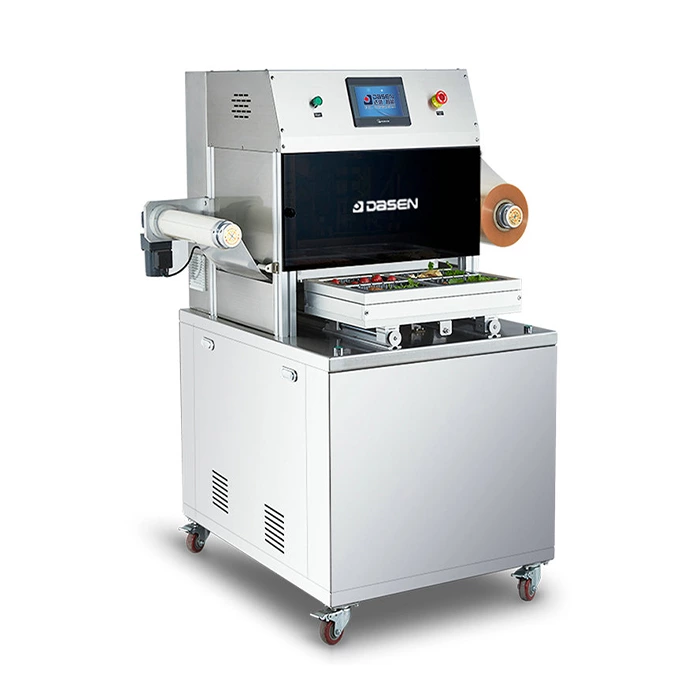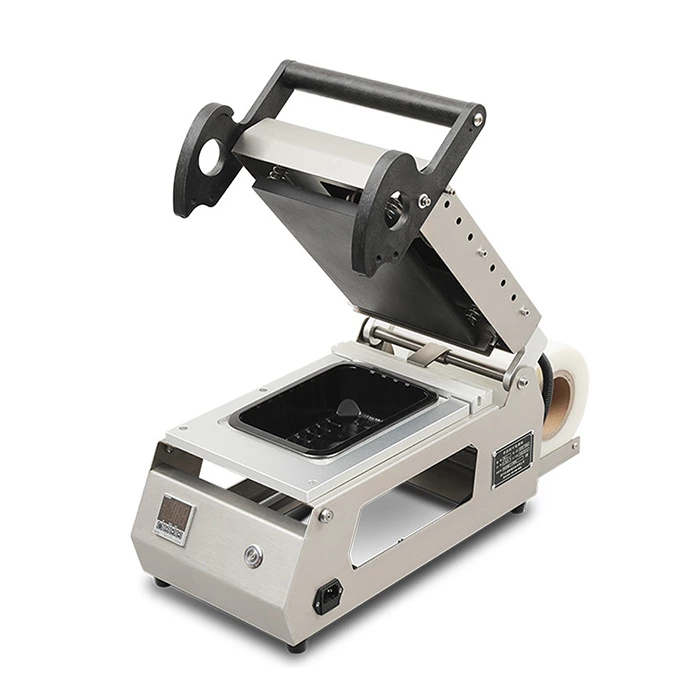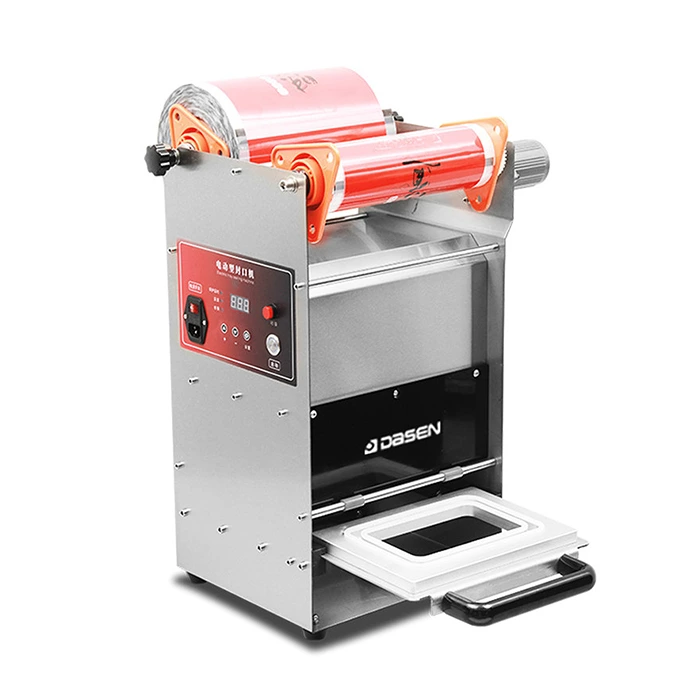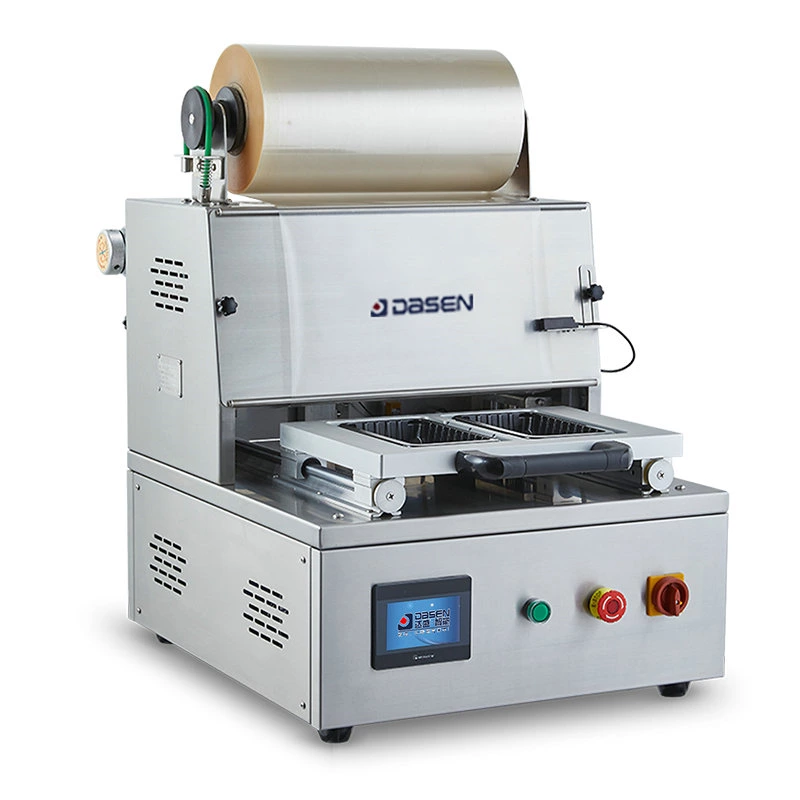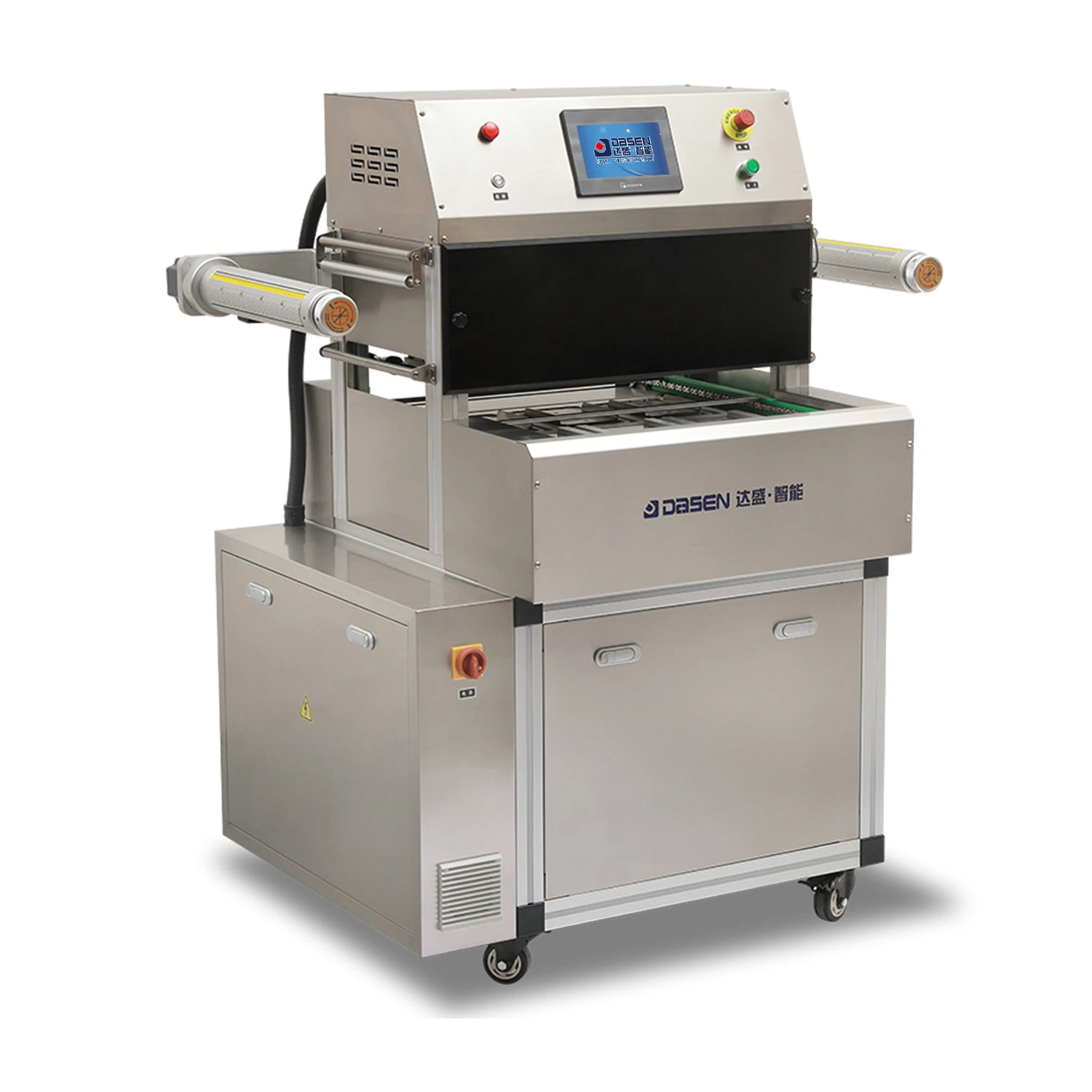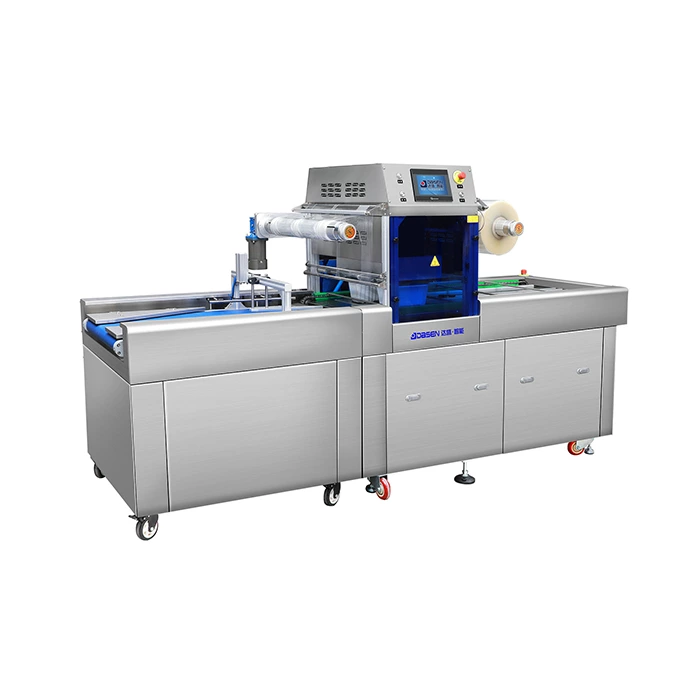Application Of Modified Atmosphere Packaging Machine
Modified Atmosphere Packaging Machine It is also called MAP or CAP abroad, and it is called modified atmosphere packaging or replacement gas packaging or inflation packaging in China. Commonly used gases are N2, O2, CO2, mixed gas O2+N2 or CO2+N2+O2 (MAP). Modified atmosphere packaging technology can be widely used to preserve various types of food, extend the shelf life of food, and enhance the value of food.
1. Application of CO2 in food packaging
A Swedish company has introduced packaging bags, containers, and storage rooms filled with 100% CO2 gas to store meat. High concentrations of CO2 can hinder the reproduction of microorganisms such as aerobic bacteria and molds, prolong the stagnation period and exponential growth period of microbial growth, and play a role in anti-corrosion and anti-mold. This method can preserve pork for 120 days without freezing. If it is pressurized, the storage time will be longer. This method has attracted great attention from meat exporting countries such as the United States and Australia.
American experts use new technology to make plastic packaging materials with CO2. That is, using a special catalyst, CO2 and ethylene oxide (or propylene oxide) are mixed in equal amounts to make a new plastic packaging material, which has the characteristics of glass-like transparency and airtightness; similar to polycarbonate and polyamide resin; it will not completely decompose into gas at a temperature of 240°C; it has biodegradability and will not pollute the environment and soil.
my country has successfully studied the use of nanotechnology to efficiently catalyze CO2 to synthesize degradable plastics. That is, the catalyst used to make plastics from CO2 is "crushed" to the nanometer level, and the catalytic molecules and CO2 are polymerized, so that each gram of catalyst catalyzes about 130 grams of CO2 to synthesize a new packaging material containing 42% CO2. As an environmentally friendly material with excellent degradability, it has broad application prospects.
2. Application of nitrogen in food packaging
Nitrogen (N2) is an ideal inert gas and has unique effects in food packaging: it does not react chemically with food and is not absorbed by food, can reduce the oxygen content in the package, greatly inhibit the growth and reproduction of microorganisms such as bacteria and mold, and slow down the oxidation and deterioration of food, thereby keeping the food fresh. Nitrogen-filled food packaging can also effectively prevent food from being squeezed and crushed, food from sticking or shrinking into a ball, and maintain the geometric shape, dryness, crispness, color, and aroma of food. Nitrogen-filled packaging is rapidly replacing traditional vacuum packaging and has been applied to fried potato chips and French fries, oil-cooked food, etc. Nitrogen-filled packaging is loved by consumers, especially children and young people, and is expected to be applied to more food packaging.
The United States uses N2 to increase the strength of beverage cans made of thin aluminum materials. Before the beverage is canned, nitrogen is dissolved in the beverage; after the beverage can is sealed, nitrogen is released from the beverage, forming a pressure on the can wall, making the beverage can equivalent to an inflatable can, thereby increasing the strength of the beverage can, with significant effects. The canned beverage will not be damaged during transportation, stacking, or on the shelf, nor will it affect the quality of the beverage. This method can also be used for beverage packaging made of polyester plastics.
When using N2, attention must be paid to the purity and quality of N2. The purity of nitrogen separated from compressed air by membrane separation or pressure swing adsorption can reach more than 99.9%. The purity of N2 used in food packaging must reach pure nitrogen level (i.e. safety level).
3. Application of composite gas in food packaging
Compound modified atmosphere fresh-keeping packaging is collectively referred to as MAP packaging internationally. The modified atmosphere fresh-keeping gas used is generally composed of CO2, N2, O2 and a small amount of special gases. CO2 can inhibit the growth and reproduction of most aerobic spoilage bacteria and molds; O2 inhibits the growth and reproduction of most anaerobic spoilage bacteria; maintains the color of fresh meat, maintains the oxygen-rich respiration and freshness of fresh fruits and vegetables; N2 is used as filling gas. The composition ratio of the composite gas is appropriately selected according to the type of food, preservation requirements and packaging materials to achieve the effect of high quality of packaged food preservation, good nutritional content, and can truly achieve the original properties and extend the shelf life of fresh food.
Compound modified atmosphere fresh-keeping packaging has been widely used at home and abroad.
▲ Modified atmosphere packaging of fresh fish and shrimp. The deterioration of fresh aquatic and marine fish mainly includes bacteria decomposing trimethylamine oxide in fish meat to release trimethylamine with a corrupt smell, oxidative rancidity of fish meat fat, enzyme degradation in fish meat to soften fish meat, and bacteria on the surface of fish body (aerobic Escherichia coli, anaerobic Clostridium) producing toxic toxins, which endanger human health.
The gas used for modified atmosphere packaging of fish is composed of CO2, O2, and N2. The concentration of CO2 gas is higher than 50%, which inhibits the growth of aerobic bacteria and mold without causing fish meat to ooze out; the concentration of O2 is 10%-15% to inhibit the reproduction of anaerobic bacteria. The gills and internal organs of fish contain a large number of bacteria, which need to be removed, cleaned and treated with disinfectant before packaging. Since CO2 easily seeps out of plastic film, the packaging material of fish modified atmosphere packaging needs to be a composite plastic film with high gas barrier properties, which can be kept for 15-30 days at a temperature of 0℃-4℃. British tuna uses 35%-45% CO2/55%-65% N2 gas fresh-keeping packaging with a shelf life of 6 days.
The deterioration of shrimp is mainly caused by microorganisms. The internal enzyme action causes the shrimp to turn black. Modified atmosphere packaging can preserve grass shrimp. First, the shrimp is soaked in a preservative solution of 100mg/L lysozyme and 1.25% sodium bisulfite, and then filled with a mixed gas of 40% CO2 and 60% N2 into the modified atmosphere packaging bag. Its shelf life is extended by 22 days compared with the control sample, which is 6.5 times the shelf life of the control sample.
▲ Modified atmosphere packaging of fresh meat of poultry and livestock
The modified atmosphere packaging of fresh pork, sheep, and cattle meat should not only maintain the original red color of the fresh meat but also be able to preserve and preserve. The gas of the modified atmosphere packaging is composed of O2 and CO2. The gas composition varies according to the type of meat. The gas composition of pork modified atmosphere packaging is 60%-70% O2 and 30%-40% CO2, and the shelf life at 0℃-4℃ is generally 7-10 days (including cooling pork at 0℃-4℃ for 24 hours after slaughter to make the ATP active substances lose, the texture becomes soft and fragrant, and the palatability is good). The modified atmosphere packaging of poultry meat is mainly for preservation and freshness preservation. The gas used for preservation is composed of CO2 and N2. The shelf life of poultry meat packaged with 50%-70% CO2/50%-30% O2 at 0℃-4℃ is up to 14 days.
In the modified atmosphere preservation packaging of meat, the use of high concentration of O2 can keep the fresh meat bright red and brighter. In an oxygen-deficient environment, the meat is lavender. If CO2, N2 and other fresh-keeping gases are used, the meat color is lavender, and the shelf life can reach about 30 days. Fresh meat packaging materials also require the use of composite plastic packaging materials with high gas barrier properties.
▲ Modified atmosphere fresh-keeping packaging for baked foods and cooked food products
Baked foods include pastries, cakes, biscuits, bread, etc., and the main component is starch. Food deterioration is caused by decay caused by bacteria and mold, rancidity caused by fat oxidation, and aging and hardening of starch molecular structure. The gas used for modified atmosphere fresh-keeping packaging of such foods is composed of CO2 and N2. Cakes without cream can be kept fresh for 20-30 days at room temperature, and moon cakes and pudding cakes can be kept fresh for 60-90 days at room temperature using high barrier composite films.
Microwave dishes, soy products, and cooked meat products of livestock and poultry are filled with CO2 and N2 to effectively inhibit the reproduction of coliform bacteria. It can be kept fresh for 5-12 days at room temperature of 20℃-25℃, and can be kept fresh for about 30 days at room temperature after conditioning and sterilization at 85℃-90℃, and can be kept fresh for 60-90 days at refrigerated temperature of 0℃-4℃.
▲Fresh fruits and vegetables are packaged in controlled atmosphere for freshness preservation. After harvest, fruits and vegetables can still maintain the metabolic function of absorbing oxygen and emitting CO2, while consuming nutrients. Fruit and vegetable preservation is achieved by reducing the O2 content in the environment and storing at low temperatures to reduce the progress of respiration, eliminating the CO2 produced by respiration to delay the maturation and aging of fruits and vegetables. The gas for controlled atmosphere packaging of fruits and vegetables is composed of O2, CO2, and N2. Fruits and vegetables are packaged with breathable film, filled with low O2 and high CO2 and mixed gas replacement and sealed, so that the O2 content in the package is lower than the air and the accumulated CO2 is higher than the air. Gas exchange is carried out through the film to achieve a controlled atmosphere balance that is conducive to the preservation of fruits and vegetables and maintains weak aerobic respiration.
Most fruits and vegetables are packaged in a mixed ratio of 5% O2, 5% CO2, and 90% N2, and have a longer shelf life at a low temperature of 6℃-8℃. Modified atmosphere packaging is used for the preservation of litchi. Treating litchi fruits with 10%CO2+90%N2 and 20%CO2+80%N2 for 24 hours can not only achieve the purpose of preservation, but also increase the good fruit rate of the fruit, keep the peel red, and do not affect the nutritional components. High CO2 and low oxygen conditions combined with ozone treatment (4.3mg/M3 concentration) and edible thin coating can extend the shelf life of strawberries by 8-10 days.
American scientists used modified atmosphere packaging to test mangoes. The mangoes were peeled and cut into pieces, and then packaged with oxygen, mixed gas (N286%, CO210%, O24%) and vacuum packaging. The results showed that the mangoes packaged with mixed gas had the longest shelf life. During storage, the mangoes had good appearance effects such as color and texture, and the damage caused by microorganisms was minimal.
Modified atmosphere packaging is also suitable for the preservation of clean vegetables. Clean vegetables, also known as cut fruits and vegetables, semi-processed fruits and vegetables, are emerging food processing products that cater to office workers. They are safe, fresh, nutritious, and convenient, but they are prone to browning after being cut. Using modified atmosphere packaging to reduce oxygen content can maximize the shelf life. For example, shredded lettuce in the United States uses 1%-3% O2, 5%-6% CO2, and 90% N2 to prevent browning. Modified atmosphere fresh-keeping packaging is also suitable for peeled and sliced apples, potatoes, leafy vegetables and other fruits and vegetables. Developing packaging films suitable for the preservation effect of modified atmosphere packaging of fruits and vegetables is the key to broadening the way to preserve fruits and vegetables.



